Rolls Royce’s first EV, the 2024 Spectre coupe, is better than a V12.
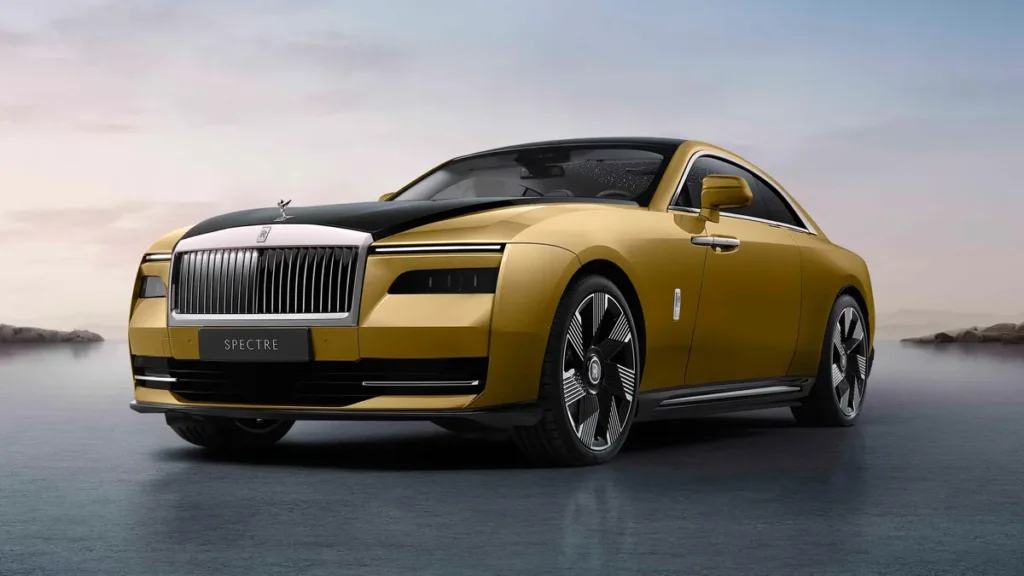
Rolls-Royce has gone through several revolutions during the last few decades. The Spectre is the first of several EVs coming from the storied marque. The 2003 Phantom was the first Rolls-Royce developed under BMW ownership and the brand’s first really new model in decades. The smaller Ghost and sportier Wraith and Dawn variants, as well as the Black Badge models, debuted in the early 2010s.
The Cullinan, Rolls’ first SUV, debuted in 2018 and was an instant success. However, Rolls-Royce is undergoing its most profound transformation since its founding in 1906. The Spectre, Rolls-first Royce’s completely electric production car, was unveiled on Tuesday and will go on sale in 2023.
Despite resembling the now-defunct Wraith in general shape and profile, Rolls-Royce describes the Spectre as the spiritual heir to the Phantom Coupe of the 2000s in terms of market positioning, and it’s undoubtedly intimidating in scale. Its overall length of 214.6 inches and wheelbase of 126.3 inches are 7.2 and 3.8 inches longer than a Wraith, respectively, while the Phantom Drophead is 6.2 and 4.4 inches longer than a Spectre.
The Spectre’s fastback roofline is similar to the Wraith’s, but the EV has considerably more dramatic proportions with a longer hood and rear overhang, as well as a sharper rear trunklid. The Spectre also has the sharpest lines and surfacing of any Rolls-Royce, with fender lines reaching sharply illuminated peaks and more dramatic shadows falling on the bodywork.
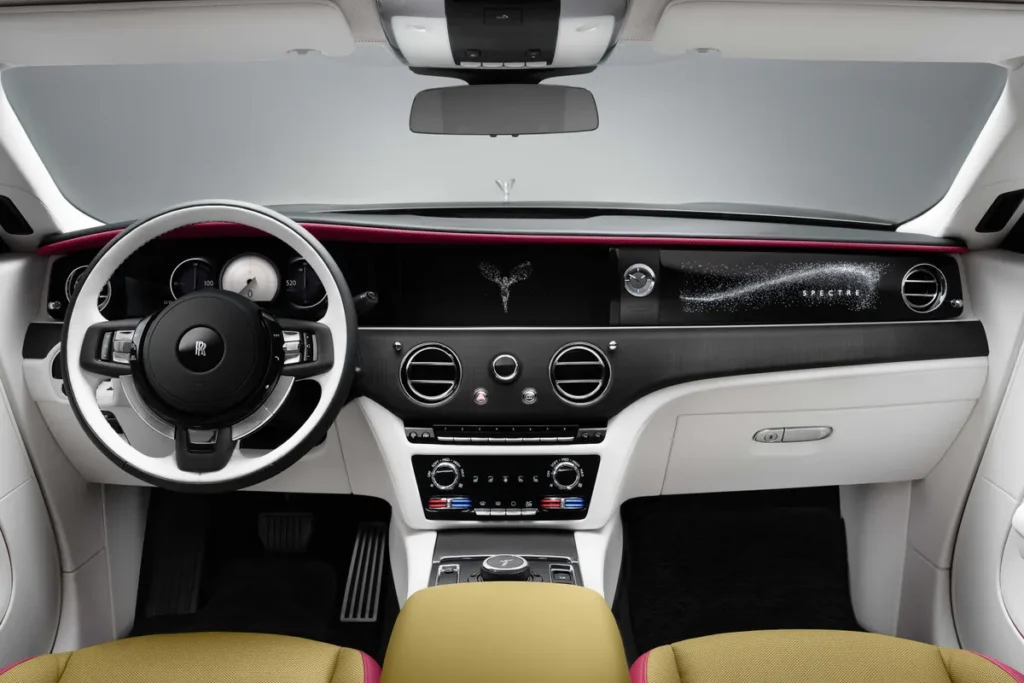
The Spectre has Rolls-sleekest Royce’s Pantheon grille yet, constructed from a single piece of aluminium and fitting nearly flush into the front end. It also has the biggest grille ever seen on a Rolls-Royce, and the inner vanes have a flusher fit that improves airflow. The hood is topped with a revised Spirit of Ecstasy hood ornament, which contributes to the Spectre being the most aerodynamic Rolls-Royce ever built, with a drag coefficient of 0.26, matching the extreme BMW i8. Rolls-Royce is the latest automaker to use a split headlight design, which I believe works well on the Spectre.
The top of the grille and fender cutlines are aligned with a super-thin LED running light, while the primary beams are inset below in a sculpted panel. Remember that the 2003 Phantom and its offshoots had two headlamp arrays that seemed strange at first. Best of all, the sandblasting grille vanes are lighted by 22 LEDs.
The Spectre’s futuristic appearance is aided by blocky lower air intakes in the front bumper, a sleek rear diffuser, and gloss black lower cladding. The taillights are tiny rectangular pods with dual vertical LED stripes that protrude from the bodywork like vintage tail fins — I love tail fins on pretty much any car — and the Spectre even has a bit of a Bangle butt in the way the trunk is more upright than the fenders that house the taillights.
Rolls-Royce also chose an unusual colour scheme for the Spectre, with glittering mustard yellow bodywork and metallic black accents on the bonnet, roof, and upper trunk. The two-tone design makes the Spectre appear sleeker and, dare I say, more sci-fi.
The Spectre is constructed on the same modular Architecture of Luxury platform that has served as the foundation for everything from the Cullinan and Ghost to the Phantom and the outrageous coachbuilt Boat Tail since 2017. Rolls-Royce built the all-aluminum Architecture of Luxury from the start to be ready for totally electric powertrains.
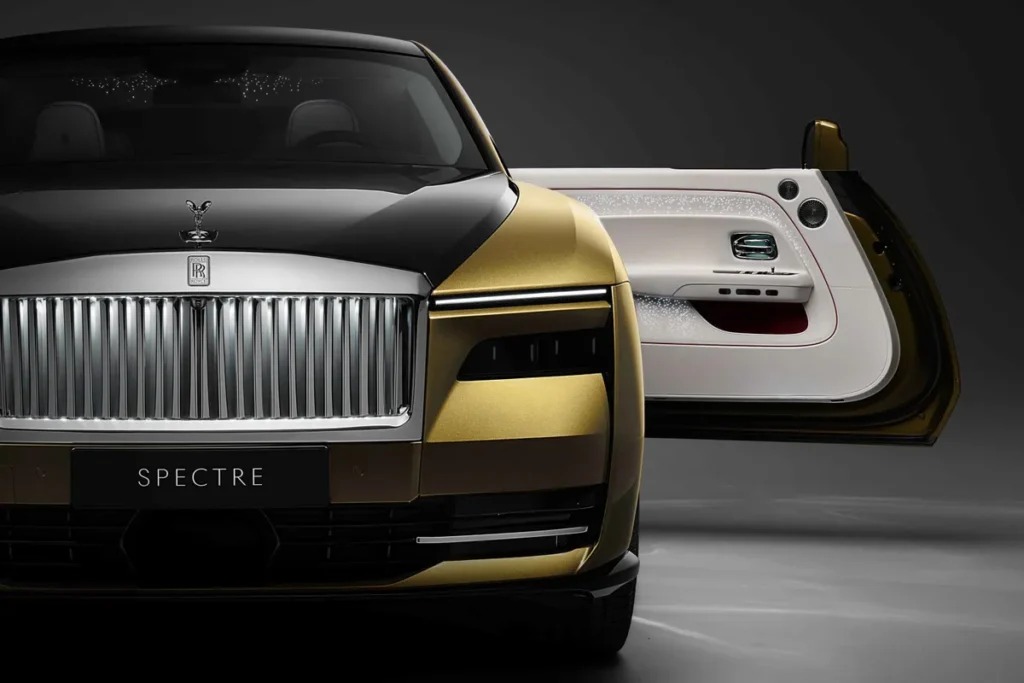
The battery is integrated into the frame, making the Spectre 30% stiffer than any previous Rolls, and the floor is between the sills rather than below or on top. A conduit for electrical and climate control pipework runs between the battery and the floor, allowing for a lower seating position and a smooth subfloor. The battery also serves as 1,543 pounds of soundproofing.
Whereas other brands are competing to see who can achieve the fastest 0-to-60 time or the longest EPA range, the Spectre harkens back to when Rolls-Royce simply described its cars’ power figures as “adequate.” While the brand hasn’t said yet, the Spectre is likely to use a pair of electric motors, one at each axle for all-wheel drive. According to Rolls’ current testing, the unnamed electric motors produce 577 horsepower and 664 pound-feet of torque – fortunately, the same torque output as the Ghost Black Badge’s twin-turbo V12, but with 14 fewer hp.
The Spectre is expected to have a 0-to-60-mph time of 4.4 seconds, which is a tenth faster than the Ghost, and a top speed of 155 mph. (A more powerful Black Badge model will be released later.) While we don’t know the precise battery size, Rolls-Royce says the Spectre will have an EPA-estimated range of up to 260 miles, which is 14 miles longer than a Porsche Taycan GTS.
The riding quality, on the other hand, could not possibly be satisfactory. Even with the Spectre’s optional (and magnificent looking) 23-inch wheels, the first time 23s have been fitted to a Rolls in nearly 100 years, Rolls-characteristic Royce’s “magic carpet ride” had to be preserved. The Spectre features the most recent iteration of the brand’s Planar suspension for the ultimate ride. When the car detects a pothole or undulation ahead, the Spectre may instantly decouple its anti-roll bars, allowing each wheel to move separately and eliminating the side-to-side motion that you would normally experience.
When the sensors and GPS in the Spectre identify a curve ahead, the system recouples the anti-roll bars, stiffens the dampers, and readies the four-wheel steering system for the optimal entry angle. There are 18 sensors in total that monitor the Spectre’s braking, power, steering, and suspension inputs, constantly modifying everything for better control and a smoother ride.
All of that calm pervades the cabin, which takes less risks with the overall design – after all, it does need to feel familiar to traditional Rolls-Royce drivers. But, as is characteristic with recent Goodwood products from the modern period, there are more than enough features that have me foaming at the mouth. The dashboard is trimmed in real aluminium, leather, and wood, with historic design elements like round metal air vents, physical climate knobs, and organ-pull controls remaining. Thankfully, there’s a large centre screen running a new infotainment system that appears to be based on BMW’s iDrive 7. (the rotary knob on the centre console matches, too).
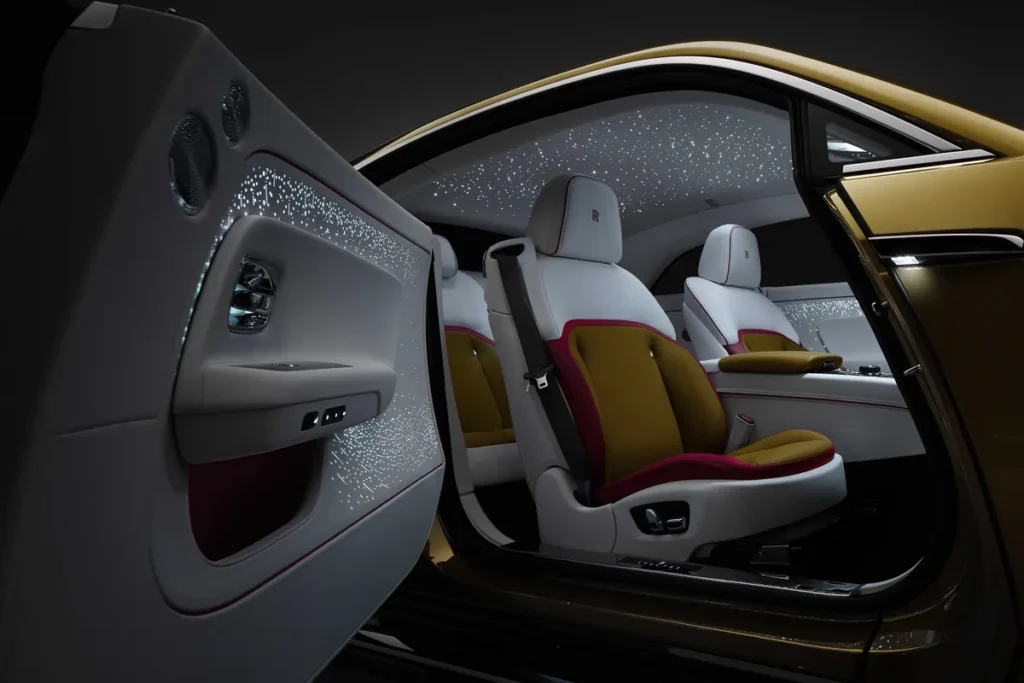
The Spectre, like the Wraith, has a four-seat layout with a fixed rear centre console that divides the sculpted bucket seats. Given the lack of a transmission tunnel, it appears technically plausible that Rolls-Royce may offer a five-seat arrangement, something that the Wraith and Dawn never had. The front seats had a much more modern design influenced by British tailoring, with redesigned lapel parts for extra contrast. (Neither did the Phantom Coupe or Drophead.)
The gauge cluster, which is totally digital for the first time in a Spectre, is where the interior becomes really creative. Rolls hasn’t revealed any specifics yet, but the gauges appear current while paying respect to old watch-like devices. Don’t worry, there’s still a physical clock in the dash adjacent to the huge passenger trim panel, which has a fantastic lit design on this Spectre.
The Spectre’s base price will be somewhere between the Cullinan (about $350,000) and the Phantom (approximately $460,000), according to Rolls-Royce, who isn’t ready to talk pricing specifics just yet. However, Rolls-Royce does not sell any cars at their base price, or even close to it. The Spectre, like every modern Rolls-Royce before it, will be virtually indefinitely customisable — the brand provides over 44,000 paint hues alone, as well as the opportunity to design your own.
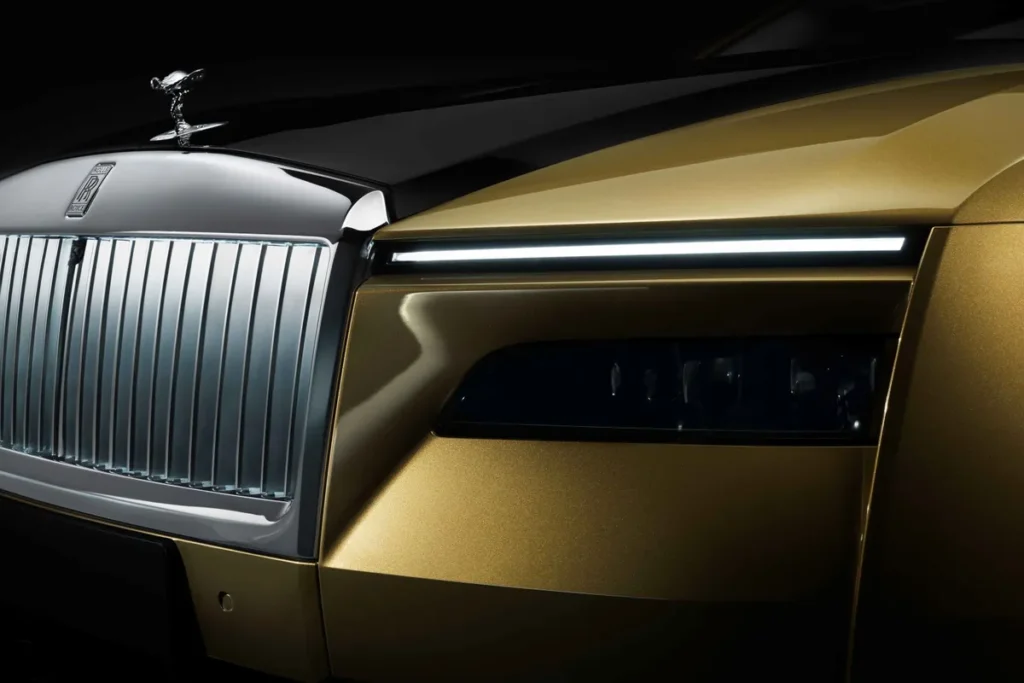
With the start of 2023 only two months away, many high-end luxury manufacturers, such as Bentley with the EXP 100 GT and Mercedes-Maybach with the EQS, are merely exhibiting electric car concepts, while others, such as Bugatti and Ferrari, are only talking about eventual EV timeframes. But Rolls-Royce, usually one of the world’s most staid and slow-to-change automakers, has arrived with its production EV. The first customers have already selected their specifications, and deliveries are scheduled to begin in the fourth quarter of 2023. Rolls-Royce understands that the future of the luxury car is electric, and by 2030, every car it sells will be totally electric.
There is one production EV that will enter production just a few months after the Spectre and will be its sole serious opponent for the time being, but it comes from an unlikely brand: Cadillac. Cadillac debuted the production version of its Celestiq EV on Monday night, a massive four-door fastback with an art deco interior that will be totally hand-built and constructed to order in Michigan for at least $300,000. As much as I despise being cheesy and admitting the cliche, we’re in the midst of another roaring ’20s, and it’s really amazing that Rolls-Royce and Cadillac are already at the vanguard of electrified luxury.
